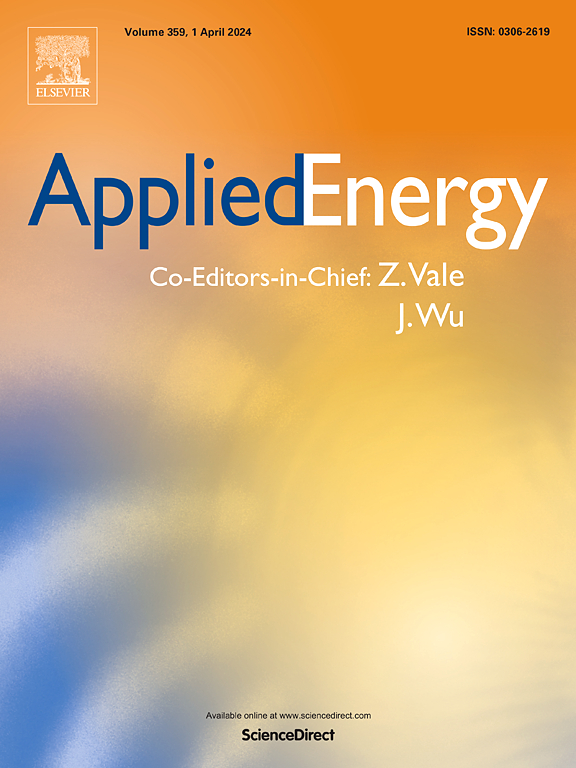Exploring bidirectional charging strategies for an electric vehicle population
IF 10.1
1区 工程技术
Q1 ENERGY & FUELS
引用次数: 0
Abstract
Vehicle-grid integration (VGI) technologies control the energy exchange of electric vehicles (EVs) with power grids for economic and environmental benefits. Despite early investigations, it is still unclear how VGI operations should be designed to balance the goals of mobility needs and electrical grid operational costs. In this paper, our objectives are to examine VGI strategies including bidirectional or vehicle-to-grid (V2G) concepts reflecting realistic operation scenarios, evaluate the performance of the proposed strategies using actual EV charging data and future concepts for hourly varying electricity rates, and identify critical service parameters that impact V2G benefits. The most aggressive V2G control scenarios produce estimated revenues of 2397 USD/veh/year, with a synergistic effect of reducing emissions to 669 lb/veh/year from the baseline with 1438 lb/veh/year. Other strategies with more constraints and in different settings indicate somewhat to significantly lower revenues and higher emissions. Sensitivity analysis shows that charging and discharging efficiency, potential fees charged by aggregators for discharging energy, and degradation impacts on battery health can critically affect V2G revenues. Also, enhancing vehicle battery capacities and charging and discharging powers can significantly enhance the V2G revenues, while the emission varies only slightly.
探索电动汽车人群的双向充电策略
车网一体化(VGI)技术控制电动汽车与电网的能量交换,以获得经济和环境效益。尽管进行了早期的调查,但目前仍不清楚VGI应该如何设计以平衡移动性需求和电网运营成本的目标。在本文中,我们的目标是研究反映现实操作场景的VGI策略,包括双向或车辆到电网(V2G)概念,使用实际电动汽车充电数据和未来每小时变化电价的概念评估拟议策略的性能,并确定影响V2G效益的关键服务参数。最激进的V2G控制方案预计将产生2397美元/veh/年的收入,协同效应将二氧化碳排放量从基线减少到669 磅/veh/年,1438 磅/veh/年。其他在不同情况下受到更多限制的战略在某种程度上表明收入会显著降低,排放量会增加。敏感性分析表明,充放电效率、聚合器对放电能量收取的潜在费用以及对电池健康的退化影响会严重影响V2G的收入。此外,提高汽车电池容量和充放电功率可以显著提高V2G收入,而排放变化很小。
本文章由计算机程序翻译,如有差异,请以英文原文为准。
求助全文
约1分钟内获得全文
求助全文
来源期刊

Applied Energy
工程技术-工程:化工
CiteScore
21.20
自引率
10.70%
发文量
1830
审稿时长
41 days
期刊介绍:
Applied Energy serves as a platform for sharing innovations, research, development, and demonstrations in energy conversion, conservation, and sustainable energy systems. The journal covers topics such as optimal energy resource use, environmental pollutant mitigation, and energy process analysis. It welcomes original papers, review articles, technical notes, and letters to the editor. Authors are encouraged to submit manuscripts that bridge the gap between research, development, and implementation. The journal addresses a wide spectrum of topics, including fossil and renewable energy technologies, energy economics, and environmental impacts. Applied Energy also explores modeling and forecasting, conservation strategies, and the social and economic implications of energy policies, including climate change mitigation. It is complemented by the open-access journal Advances in Applied Energy.
 求助内容:
求助内容: 应助结果提醒方式:
应助结果提醒方式:


